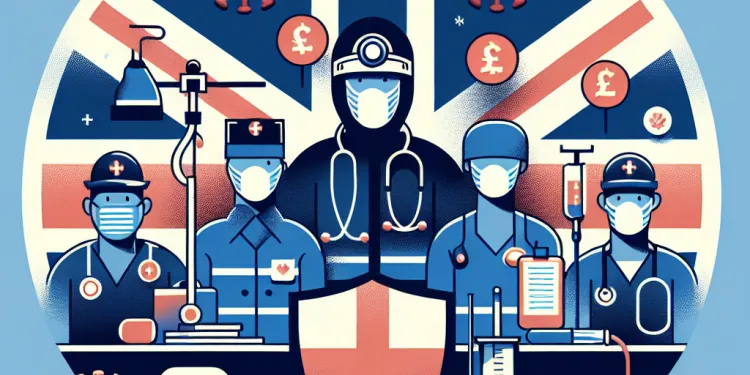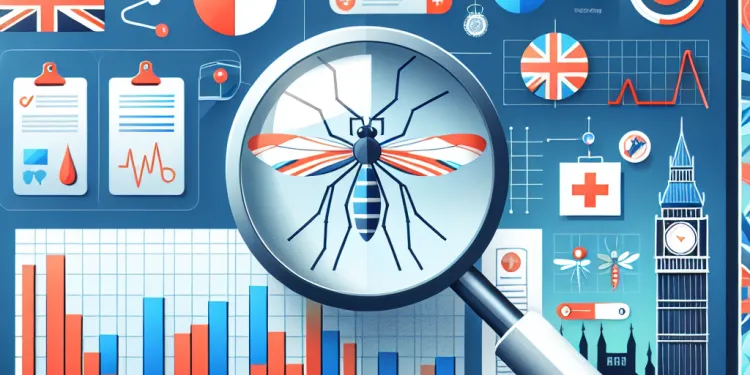
Find Help
More Items From Ergsy search
-

How do health authorities confirm a Marburg virus outbreak?
Relevance: 100%
-

Has Marburg virus caused any major outbreaks?
Relevance: 60%
-

What measures are being taken to control Marburg virus outbreaks?
Relevance: 59%
-

Are there any countries at higher risk for Marburg virus outbreaks?
Relevance: 58%
-

What is the Marburg Virus?
Relevance: 58%
-

Is the Marburg virus related to the Ebola virus?
Relevance: 52%
-

Is there a vaccine for Marburg virus?
Relevance: 52%
-

Where was the Marburg virus first discovered?
Relevance: 52%
-

How is Marburg virus disease diagnosed?
Relevance: 51%
-

What research is being done on the Marburg virus?
Relevance: 50%
-

How long is the incubation period for the Marburg virus?
Relevance: 48%
-

What is the mortality rate of Marburg virus disease?
Relevance: 48%
-

How is the Marburg virus transmitted?
Relevance: 48%
-

Can Marburg virus disease be prevented?
Relevance: 47%
-

How can healthcare workers protect themselves from Marburg virus infection?
Relevance: 45%
-

What is the typical progression of Marburg virus disease?
Relevance: 44%
-

Can Marburg virus disease recur after recovery?
Relevance: 44%
-

What are the symptoms of Marburg virus disease?
Relevance: 43%
-

Why are Nipah Virus outbreaks considered a public health concern?
Relevance: 38%
-

How is Nipah Virus controlled during outbreaks?
Relevance: 38%
-

Can Nipah Virus cause outbreaks?
Relevance: 37%
-

How do health officials monitor West Nile Virus?
Relevance: 35%
-

What regions are most at risk for Nipah Virus outbreaks?
Relevance: 33%
-

What is the Ebola virus?
Relevance: 31%
-

How is Nipah Virus diagnosed?
Relevance: 29%
-

Is there a cure for Nipah Virus?
Relevance: 29%
-

Are measles outbreaks common in the UK?
Relevance: 28%
-

What is Nipah Virus?
Relevance: 27%
-

Are there any Zika virus outbreaks currently?
Relevance: 26%
-

Where was Nipah Virus first identified?
Relevance: 26%
-

Should UK travelers be concerned about Zika virus?
Relevance: 26%
-

What preventive measures can reduce the risk of Nipah Virus infection?
Relevance: 25%
-

Where do Chikungunya outbreaks typically occur?
Relevance: 25%
-

What triggers a cold sore outbreak?
Relevance: 25%
-

Why are measles outbreaks still occurring?
Relevance: 25%
-

What is the mortality rate of Nipah Virus infection?
Relevance: 25%
-

Is there a vaccine for the Zika virus?
Relevance: 25%
-

What should someone do if they suspect Nipah Virus infection?
Relevance: 25%
-

Are fake weight loss drugs often unapproved by health authorities?
Relevance: 24%
-

What global organizations are involved in Nipah Virus research?
Relevance: 24%
Introduction to Marburg Virus
Marburg virus is a highly infectious virus that causes severe viral hemorrhagic fever in humans. It is part of the Filoviridae family, which also includes the Ebola virus. Given its high mortality rate, ranging from 24% to 88%, prompt identification and response to outbreaks are crucial to public health.
Initial Detection of Symptoms
The confirmation of a Marburg virus outbreak typically begins with the recognition of symptoms in patients. These symptoms are often similar to those of other tropical diseases, including high fever, severe headache, and malaise, progressing to gastrointestinal symptoms, bleeding, and multisystem involvement. Health authorities are alerted when clusters of such symptoms appear, especially in regions with previous outbreaks or bat-human interactions, as fruit bats are known natural hosts of the virus.
Epidemiological Investigation
Once suspicious cases are identified, an epidemiological investigation is conducted. Health officials gather data on patients' travel history, contact with wildlife, and any links to known cases. This information is used to define the potential scope of the outbreak and initiate a containment strategy. Rapid case identification helps identify other possible cases and prevents further transmission.
Laboratory Testing for Confirmation
Confirming a Marburg virus outbreak requires laboratory testing. Suspected cases are tested using real-time polymerase chain reaction (RT-PCR) tests, which detect viral RNA in blood samples. Enzyme-linked immunosorbent assays (ELISA) can also be employed to detect antigens or antibodies specific to the Marburg virus. Health authorities in the UK rely on laboratories equipped with high-level biosafety protocols to handle these dangerous pathogens safely and accurately.
Notification and International Collaboration
Upon laboratory confirmation, health authorities notify relevant national and international health bodies, such as the UK's Health Security Agency, the World Health Organization (WHO), and the Centers for Disease Control and Prevention (CDC). This communication ensures a coordinated response and access to international expertise and resources. The WHO often assists in dispatching teams to the affected regions to aid with control and prevention efforts.
Implementation of Control Measures
Control measures are immediately implemented to contain the outbreak. These strategies include contact tracing, isolation of confirmed and suspected cases, and enhanced infection prevention and control practices in healthcare settings. Public health messaging is used to inform the public about protective measures, reducing viral spread. Health authorities may also impose travel restrictions and increase surveillance to monitor and prevent cross-border transmission.
Conclusion
Prompt response and confirmation of a Marburg virus outbreak are essential to mitigate the impact on affected communities. Through a combination of clinical awareness, laboratory diagnostics, international collaboration, and swift public health interventions, health authorities work to contain outbreaks effectively and safeguard public health.
Introduction to Marburg Virus
The Marburg virus is a very dangerous virus that makes people very sick. It is part of the same virus family as the Ebola virus. The virus can cause death in many people, so it is important to act fast when there is an outbreak to keep people safe.
Recognizing the Symptoms
Doctors know there might be a Marburg virus problem when people start showing signs of being sick. These signs can be a high fever, very bad headache, and feeling very tired. People might also have stomach problems, bleeding, and sickness in many parts of the body. People who work in health look for these signs, especially in areas that have seen the virus before or where people and bats are near each other. Bats can carry the virus.
Investigating the Outbreak
When doctors see signs of the virus, they look into each person’s travel and contacts with animals or other sick people. This helps them understand how big the problem is and how to stop it. Finding sick people quickly helps stop the virus from spreading to more people.
Testing for the Virus
Doctors use special tests to be sure someone has the Marburg virus. They take a blood sample and use tests called RT-PCR to find the virus. Another test, called ELISA, can find pieces of the virus or the body’s response to the virus. In the UK, special labs with strong safety rules do these tests to keep everyone safe.
Working with Others
When a test shows someone has Marburg virus, doctors tell health groups in the UK and around the world, like the World Health Organization (WHO) and the Centers for Disease Control and Prevention (CDC). These groups help by sharing what they know and sending people to help stop the virus.
Stopping the Spread
To stop the virus, health workers take quick action. They find and watch people who have been near someone sick, keep sick people away from others, and make hospitals extra safe. They tell people how to stay safe and may limit travel to stop the virus from moving to new places.
Conclusion
Acting quickly when the Marburg virus appears helps protect people. Doctors and health workers use their knowledge, work with international experts, and take fast steps to keep the virus from spreading. This teamwork helps keep communities safe.
Frequently Asked Questions
What is the Marburg virus?
Marburg virus is a highly infectious viral hemorrhagic fever in the same family as the Ebola virus, known to cause severe illness and is transmitted to humans from fruit bats.
How is a Marburg virus outbreak confirmed?
A Marburg virus outbreak is confirmed through laboratory testing of blood samples and other bodily fluids of suspected cases to detect the virus’s presence using techniques like PCR (polymerase chain reaction).
What are the initial signs of a Marburg virus infection?
Initial signs of Marburg virus infection include sudden onset of fever, chills, headache, and muscle pain. These are followed by a rash and symptoms that increase in severity.
Why is early detection of Marburg virus crucial?
Early detection of Marburg virus is crucial to implement control measures quickly, prevent further transmission, and manage the outbreak effectively.
What role do local health authorities play during a suspected outbreak?
Local health authorities monitor and report suspected cases, collect samples for testing, and implement control measures to prevent further spread.
What techniques are used to confirm a Marburg virus outbreak in a laboratory?
Techniques such as RT-PCR and viral culture are used to confirm Marburg virus presence in clinical specimens.
How long does it take to confirm a Marburg virus outbreak?
Confirmation of a Marburg virus outbreak can take several days as laboratory tests are conducted and analyzed.
How do health authorities determine the source of a Marburg outbreak?
Health authorities conduct epidemiological investigations to trace the origin of the infection, often linked to spillover from an animal reservoir like fruit bats.
Can Marburg virus outbreaks be prevented?
Prevention is challenging but focusing on reducing wildlife-to-human contact and pursuing rapid response during initial cases can help minimize outbreaks.
What is the mortality rate of Marburg virus disease?
The mortality rate of Marburg virus disease can range from 24% to 88%, depending on the outbreak and quality of care.
What steps follow after an outbreak confirmation?
Once an outbreak is confirmed, health authorities implement case management, quarantine measures, contact tracing, and public information campaigns.
How do health authorities communicate outbreak status to the public?
Outbreak status is communicated through press releases, media briefings, and public health announcements.
What role does the World Health Organization (WHO) play in a Marburg outbreak?
WHO provides technical assistance, conducts risk assessments, and helps coordinate the international response to the outbreak.
How do health authorities manage patients during a Marburg outbreak?
Patients are treated in isolation centers with supportive care, including fluid replacement, oxygen therapy, and treatment of specific symptoms.
What protective measures are taken by health workers during an outbreak?
Health workers use personal protective equipment (PPE) and adhere to strict infection control protocols to prevent infection.
How is Marburg virus transmitted among humans?
Marburg virus is transmitted among humans through direct contact with bodily fluids of an infected person or contaminated surfaces and materials.
Why is contact tracing important in controlling a Marburg outbreak?
Contact tracing helps identify and monitor individuals who may have been exposed to the virus, preventing further spread.
How do health authorities test samples for Marburg virus?
Samples are tested for Marburg virus using RT-PCR, antigen detection tests, and sometimes viral culture in specialized laboratories.
What challenges do health authorities face during a Marburg outbreak?
Challenges include limited laboratory capacity, logistical issues, public misinformation, and the need for rapid and coordinated response.
What personal precautions can individuals take during a Marburg virus outbreak?
Individuals should avoid contact with infected individuals, follow health advisories, maintain hygiene, and report symptoms to health authorities promptly.
What is the Marburg virus?
The Marburg virus is a type of germ that can make people very sick.
It is a bit like the flu, but much worse.
If you get this virus, you might have a fever, feel weak, and have pain.
Doctors can help people who are sick, but it is important to be careful and avoid getting the virus.
For more help, you can use pictures, videos, or ask someone to explain it to you.
Marburg virus is a very strong virus that makes people really sick. It is from the same family as the Ebola virus. People can get this virus from fruit bats.
How do we know if the Marburg virus is making people sick?
Doctors check for the Marburg virus by testing blood and other body fluids. They use a special test called PCR to see if the virus is there.
What are the first signs of Marburg virus?
The Marburg virus can make you sick. Here are some of the first signs:
- You might feel very tired.
- You could get a headache.
- Your eyes might hurt.
These are just a few signs. If you think you are sick, tell a grown-up or see a doctor.
At first, when someone has Marburg virus, they might quickly get a fever. They might feel very cold with chills. They can also have a headache and sore muscles. After that, they might get a rash and feel even more unwell.
If someone has trouble understanding, it can help to read slowly and take breaks.
Why is it important to find out about Marburg virus early?
Finding out about the Marburg virus early is very important. It helps doctors treat people faster. It also stops the virus from spreading to more people.
Simple tools like charts with pictures can help explain what to look out for. Talking with a nurse or doctor is a good idea too.
It is very important to find the Marburg virus early. This helps to stop the virus from spreading. It also helps to keep people safe and manage the situation better.
What do local health authorities do when there might be a disease outbreak?
Local health workers watch and tell about people who might be sick. They take samples to test for illness. They also make plans to stop the disease from spreading to more people.
How do scientists find out if people have Marburg virus in a lab?
Scientists look for Marburg virus by doing special tests in a lab. These tests help them see if people have the virus. Here are some ways they do it:
- **Blood Tests:** Scientists take a small amount of blood and check it for the virus.
- **Microscope:** They use a powerful microscope to look for signs of the virus that are too tiny to see with eyes alone.
- **Special Machines:** These machines can find the virus even if there's only a little bit in the blood.
These tests help doctors know if someone is sick with Marburg virus.
Doctors use special tests to find the Marburg virus in the body. Two tests are RT-PCR and viral culture.
How long to know if Marburg virus is spreading?
It can take a few days to know if there's a Marburg virus outbreak. Scientists need to do special tests in a lab.
How do health workers find out where a Marburg outbreak starts?
Health workers try to find out where Marburg, a serious illness, begins spreading. Here is how they do it:
- They talk to people who are sick and ask about their recent activities.
- They visit places the sick people have been, like their homes or workplaces.
- They collect samples, like blood, from the sick people to study in a lab.
- They work with local communities to find out if more people are getting sick.
To help understand better, you can:
- Use pictures or videos to see how health workers do their job.
- Ask someone to read with you and talk about the information.
- Use simple maps to see where the illness might have started.
- Break down the information into small steps or stories.
Health workers do studies to find out where an infection comes from. It often starts when germs move from animals, like fruit bats, to people.
Can we stop Marburg virus from spreading?
The Marburg virus is a germ that can make people very sick. We want to know if we can stop it from spreading.
To help understand and learn more, people can look at pictures or videos. Talking with someone who knows about this virus can also help.
If you have questions, ask a grown-up or a doctor. They can explain it better.
Stopping sickness from spreading is hard. We can make it less likely by staying away from wild animals and acting quickly when someone first gets sick.
How many people die from the Marburg virus?
The Marburg virus is a serious illness.
It can make people very sick.
Many people who get it do not survive.
If 10 people get the Marburg virus, about 8 of them could die.
Tools to help:
- Use pictures to learn more about Marburg virus.
- Ask a friend or family member to read with you.
The Marburg virus disease can be very serious. It can make people very sick. Out of 100 people who get it, between 24 and 88 people might not survive. It depends on how bad the outbreak is and how good the medical care is.
What happens after we know there is an outbreak?
When there is a disease outbreak, health workers do important things to help. They take care of sick people, use quarantine to keep the disease from spreading, find and talk to people who were near someone sick, and give information to the public.
How do health authorities tell people about an outbreak?
Health authorities are groups that make sure we stay safe and healthy.
An outbreak happens when lots of people get sick from the same thing.
Health authorities tell us about an outbreak using:
- News: They talk to TV, radio, and newspapers.
- Websites: They put information on their websites.
- Social Media: They share updates on Facebook, Twitter, and Instagram.
- Posters and Flyers: They put up posters and give out flyers in places like schools and hospitals.
To make things clear and easy to understand, they might use:
- Simple Words: So everyone can understand.
- Pictures: To show what they mean.
If you find reading hard, you can:
- Ask someone to read it to you.
- Use apps that read text out loud.
We tell people about sickness outbreaks in different ways. We use press releases, talk to the news, and share health messages with everyone.
What does the World Health Organization (WHO) do in a Marburg outbreak?
The WHO helps stop people from getting sick during a Marburg outbreak.
The WHO does many things to help:
- Find out: WHO looks for where people are getting sick.
- Tell people: WHO gives information to help people stay safe.
- Send help: WHO sends doctors and supplies to help people.
- Work together: WHO works with other groups to solve problems.
These tools can help you understand better:
- Pictures: Look at images to understand what WHO does.
- Videos: Watch short videos about WHO's work.
- Apps: Use apps with easy words to learn more.
WHO gives help with special skills. They check how risky things are and help the world work together when there is a disease spreading.
How do health authorities take care of people during a Marburg outbreak?
When there is a Marburg outbreak, health workers help keep people safe. They take care of people who get sick.
Here are some ways they help:
- Medical Care: Doctors and nurses help sick people feel better. They give them medicine and look after them.
- Isolation: Sick people stay in a special place away from others. This stops the germ from spreading.
- Information: Health workers tell everyone how to stay safe. They give tips on washing hands and wearing masks.
- Tracing Contacts: Health workers find people who were near the sick person. They check if these people are sick too.
If you find this hard to read, ask someone you trust to help you understand. You can also watch videos that explain it clearly.
People who are sick go to special centers where they are cared for. They get help like fluids to drink, oxygen to breathe better, and medicine for the things that make them feel bad.
How do health workers stay safe during an outbreak?
Health workers take steps to stay safe from diseases. Here are some ways they protect themselves:
- Wear gloves, masks, and gowns to keep germs away.
- Wash hands often with soap and water.
- Use hand sanitizer if they can't wash their hands.
- Keep a safe distance from sick people.
- Get vaccines if needed.
- Follow rules made by health experts.
If you want to know more, ask a grown-up or use special tools like audiobooks or picture guides to help understand.
Health workers wear special clothes and follow strict rules to stay safe and stop germs from spreading.
How do people catch the Marburg virus from each other?
People can catch the Marburg virus from touching the blood or other body fluids of someone who is sick with it. They can also catch it by touching things that have the virus on them.
Why is finding people who were near a sick person important to stop the spread of Marburg?
When someone gets sick with Marburg, we need to know who they saw before they got sick.
This is important because:
- We can help those people stay safe.
- We can stop more people from getting sick.
Finding these people is called "contact tracing." It helps us stop the Marburg virus.
Tools like phone calls or visits can help us find people who were near the sick person.
Contact tracing finds people who might have been near someone with the virus. It helps stop the virus from spreading more.
How do health workers check for Marburg virus?
Health workers have special ways to find the Marburg virus in samples. They use special tools and tests.
First, health workers take a small sample. This could be blood or saliva.
They take this sample to a lab. In the lab, experts use special machines and tests.
If the test says "yes," it means the virus is in the sample.
If the test says "no," the virus is not in the sample.
Health workers use these tests to keep people safe and healthy.
If you would like support to understand health information, you can ask a friend, family member, or support worker to help. You can also use tools like magnifiers, reading apps, or simple diagrams to make things clearer.
Doctors check for the Marburg virus using special tests in labs. They use three main tests: RT-PCR, antigen tests, and sometimes they grow the virus to see if it's there.
What problems do health workers face during a Marburg outbreak?
Some problems are: not enough labs, trouble with transport, wrong information for people, and needing to act fast and work together.
How can people keep safe during a Marburg virus outbreak?
Here are some easy ways to stay safe:
- Wash your hands often with soap and water.
- Avoid touching your face, especially your eyes, nose, and mouth.
- Stay away from people who are sick.
- Do not touch wild animals or their body fluids.
- If you feel sick, tell a doctor right away.
- Listen to health experts and follow their advice.
Tools to help:
- Picture guides to show how to wash hands properly.
- Videos that explain virus safety in simple words.
To stay healthy, keep away from people who are sick. Listen to health advice. Wash your hands a lot. Tell the doctor quickly if you feel sick.
Useful Links
- Ergsy carfully checks the information in the videos we provide here.
- Videos shown by Youtube after a video has completed, have NOT been reviewed by ERGSY.
- To view, click the arrow in centre of video.
- Most of the videos you find here will have subtitles and/or closed captions available.
- You may need to turn these on, and choose your preferred language.
- Go to the video you'd like to watch.
- If closed captions (CC) are available, settings will be visible on the bottom right of the video player.
- To turn on Captions, click settings .
- To turn off Captions, click settings again.
More Items From Ergsy search
-

How do health authorities confirm a Marburg virus outbreak?
Relevance: 100%
-

Has Marburg virus caused any major outbreaks?
Relevance: 60%
-

What measures are being taken to control Marburg virus outbreaks?
Relevance: 59%
-

Are there any countries at higher risk for Marburg virus outbreaks?
Relevance: 58%
-

What is the Marburg Virus?
Relevance: 58%
-

Is the Marburg virus related to the Ebola virus?
Relevance: 52%
-

Is there a vaccine for Marburg virus?
Relevance: 52%
-

Where was the Marburg virus first discovered?
Relevance: 52%
-

How is Marburg virus disease diagnosed?
Relevance: 51%
-

What research is being done on the Marburg virus?
Relevance: 50%
-

How long is the incubation period for the Marburg virus?
Relevance: 48%
-

What is the mortality rate of Marburg virus disease?
Relevance: 48%
-

How is the Marburg virus transmitted?
Relevance: 48%
-

Can Marburg virus disease be prevented?
Relevance: 47%
-

How can healthcare workers protect themselves from Marburg virus infection?
Relevance: 45%
-

What is the typical progression of Marburg virus disease?
Relevance: 44%
-

Can Marburg virus disease recur after recovery?
Relevance: 44%
-

What are the symptoms of Marburg virus disease?
Relevance: 43%
-

Why are Nipah Virus outbreaks considered a public health concern?
Relevance: 38%
-

How is Nipah Virus controlled during outbreaks?
Relevance: 38%
-

Can Nipah Virus cause outbreaks?
Relevance: 37%
-

How do health officials monitor West Nile Virus?
Relevance: 35%
-

What regions are most at risk for Nipah Virus outbreaks?
Relevance: 33%
-

What is the Ebola virus?
Relevance: 31%
-

How is Nipah Virus diagnosed?
Relevance: 29%
-

Is there a cure for Nipah Virus?
Relevance: 29%
-

Are measles outbreaks common in the UK?
Relevance: 28%
-

What is Nipah Virus?
Relevance: 27%
-

Are there any Zika virus outbreaks currently?
Relevance: 26%
-

Where was Nipah Virus first identified?
Relevance: 26%
-

Should UK travelers be concerned about Zika virus?
Relevance: 26%
-

What preventive measures can reduce the risk of Nipah Virus infection?
Relevance: 25%
-

Where do Chikungunya outbreaks typically occur?
Relevance: 25%
-

What triggers a cold sore outbreak?
Relevance: 25%
-

Why are measles outbreaks still occurring?
Relevance: 25%
-

What is the mortality rate of Nipah Virus infection?
Relevance: 25%
-

Is there a vaccine for the Zika virus?
Relevance: 25%
-

What should someone do if they suspect Nipah Virus infection?
Relevance: 25%
-

Are fake weight loss drugs often unapproved by health authorities?
Relevance: 24%
-

What global organizations are involved in Nipah Virus research?
Relevance: 24%